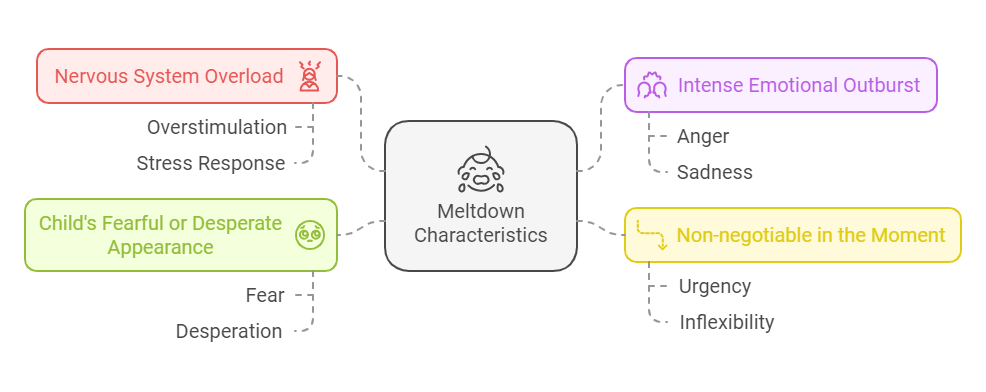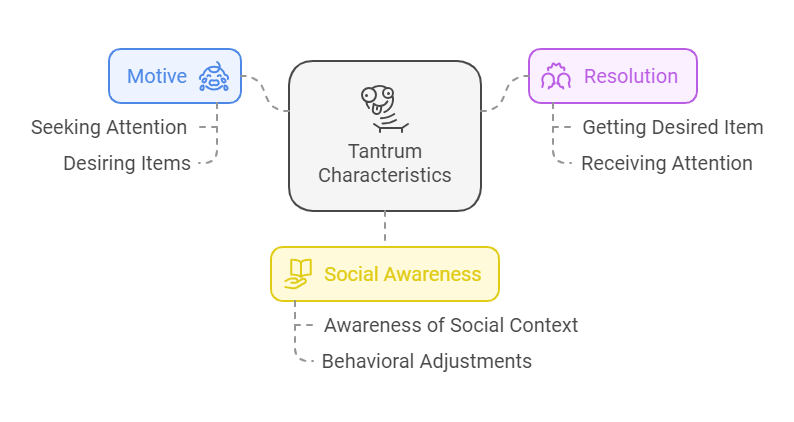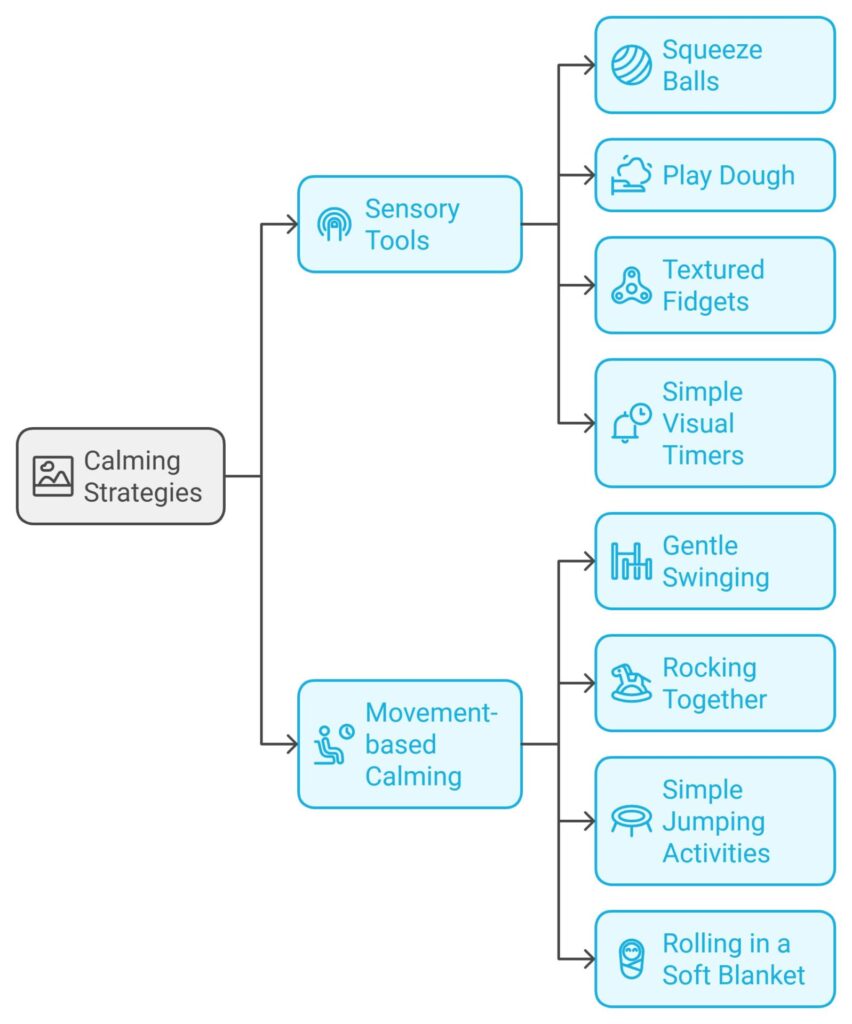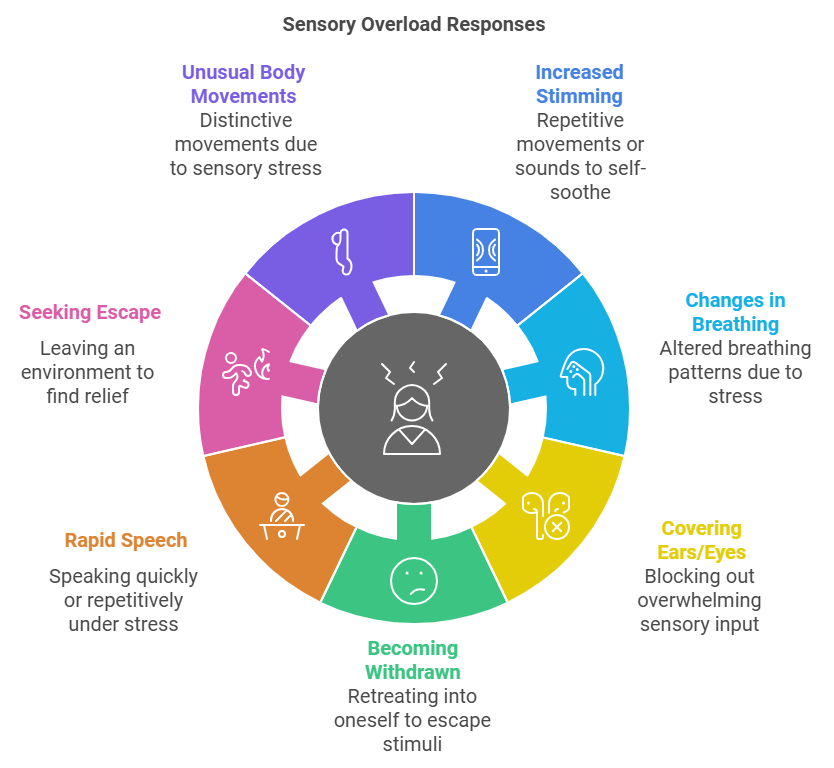Parenting can feel overwhelming when your child experiences an autism meltdown in children—especially when typical “calm down” methods fail. I remember my son Idan melting down in a busy supermarket. An unexpected announcement over the loudspeaker set off a chain reaction of sensory overload, and all my usual parenting tools felt useless in that moment.
Yet over time, I learned that it’s not about quick fixes. It’s about creating a personalized toolkit of strategies that recognize your child’s unique sensory profile. In this guide, we’ll explore practical techniques to help you:
- Spot early warning signs of meltdowns.
- Prevent overload with better environments and routines.
- Provide calming supports that actually work for your child.
- Teach self-regulation skills in everyday life.
Table of Contents
- Understanding the Storm: What Is an Autism Meltdown in Children?
- Meltdowns vs. Tantrums: Key Differences
- Common Triggers and Warning Signs
- Why Traditional Methods Often Backfire
- Preventive Measures: Setting Up for Success
- Age-Specific Approaches to Calming
- Building a Calming Toolkit
- When Nothing Seems to Work
- Conclusion

Understanding the Storm: What Is an Autism Meltdown in Children?
An autism meltdown in children often appears like a tantrum from the outside. But these overwhelming episodes are more akin to a nervous system “circuit breaker” shutting down. They typically result from sensory overload, unexpected changes, or an accumulation of stress.
Key Points
- Children aren’t “choosing” a meltdown.
- It’s a response to overwhelming sensory or emotional input.
- Complex communication or reasoning is nearly impossible during a meltdown.
Meltdowns vs. Tantrums: Key Differences
A tantrum often involves a goal—like wanting that candy bar at checkout—and can be redirected or negotiated. A meltdown, however, isn’t about bargaining. It’s a full-body response to overload, where your child’s fight-or-flight reflexes dominate.
Meltdown Characteristics
- Nervous system overload.
- Intense emotional outburst.
- Non-negotiable in the moment.
- Child may appear fearful or desperate.

Tantrum Characteristics
- Often has a clear motive (like seeking attention or items).
- Can stop if the child gets what they want.
- Child remains somewhat aware of the social situation.

Common Triggers and Warning Signs
Just like storm clouds precede a downpour, meltdowns often come with warning signals. By identifying triggers and early signs, you can prevent or lessen an autism meltdown in children.
Frequent Meltdown Triggers
Physical Environment
- Loud noises or sudden announcements
- Bright or flickering lights
- Unpleasant smells
- Uncomfortable clothing textures
- Temperature shifts
Social Situations
- Crowded spaces
- New environments or routines
- Multiple demands or instructions at once
- High-pressure social interactions
Internal Factors
- Hunger or thirst
- Lack of sleep
- Physical discomfort or illness
- Sensory buildup over the day
Early Warning Signs
- Covering ears, increased stimming, or rocking
- Changes in breathing or rapid speech
- Seeking escape from an environment
- Becoming unusually quiet or withdrawn
 Why Traditional Methods Often Backfire
Why Traditional Methods Often Backfire
When children are in meltdown mode, logical steps like “take a deep breath” or “look at me” usually fail. That’s because the parts of the brain that handle complex processing are temporarily offline. These requests can feel like asking a person to solve a math puzzle while fleeing a burning building.
Better Approach
- Provide immediate sensory relief (e.g., noise-canceling headphones).
- Offer few, simple words.
- Focus on ensuring safety and comfort.
Preventive Measures: Setting Up for Success
Prevention is key to reducing the intensity or frequency of meltdowns. By creating a supportive environment and teaching strategies during calm periods, you can help your child navigate tough moments more smoothly.
Creating a Sensory-Friendly Space
- Lighting Control: Use adjustable lamps or provide sunglasses for children sensitive to bright lights.
- Sound Management: Offer ear defenders or create quiet corners away from household noise.
- Calming Textures: Keep favorite soft blankets or weighted vests in easily accessible areas.
- Organization and Clarity: Reduce clutter and use visual aids to provide predictability.

Age-Specific Approaches to Calming
Preschool (3–5 Years)
Little ones often lack the words to describe sensory overload. Bear hugs, gentle rocking, or favorite comfort items work wonders. Keep routines simple and consistent.
Key Strategies
- Deep pressure (compression clothing or lap pads).
- Short, clear instructions.
- Visual cues for emotional states (happy, sad, overwhelmed).
- Limited choices for regulation (e.g., “Bear hug or quiet corner?”).
Early School Age (6–8 Years)
Children start to recognize patterns in their emotions. My son Idan relies on a small fan’s gentle breeze and specific fidget toys for quick relief.
Key Strategies
- Introduce a consistent calming routine (e.g., 2-minute fan break).
- Provide visual schedules for daily tasks.
- Offer simple breathing exercises during calm moments.
- Let them choose from 2–3 calming activities.
Older Elementary (9–12 Years)
Around this age, children can begin to identify triggers. They may ask for noise-canceling headphones or request a break before meltdown escalates.
Key Strategies
- Encourage self-advocacy: “Do you need your headphones now?”
- Teach more advanced breathing or grounding techniques.
- Discuss triggers openly and problem-solve together.
Teenagers (13+)
Teens often crave independence. Empower them to manage meltdowns privately, and respect their need for space.
Key Strategies
- Offer age-appropriate tools (calming apps, personal headphones).
- Encourage journaling or mindfulness (if receptive).
- Respect privacy but stay available if they need support.
Building a Calming Toolkit

Having a “first-aid kit” for autism meltdown in children can be a life-saver. Customize items to your child’s sensory profile, and store them in a backpack or easily accessible corner.
Essential Items
- Noise-canceling headphones
- Fidget toys or stress balls
- Weighted blanket or vest
- Favorite calming texture (soft toy, plush pillow)
- Visual supports or cue cards
How to Use
- Introduce tools during calm times, so they become familiar.
- Let your child decide which item to use.
- Refresh or rotate items as their needs evolve.
When Nothing Seems to Work
Even the most prepared parents face moments where meltdowns persist. On those days:
Ensure Safety
- Gently clear the area to protect your child and others.
- Offer comfort without forcing eye contact or conversation.
Seek Support
- Reach out to therapists or support groups.
- Consider exploring new interventions or sensory evaluations.
Document and Learn
- Keep track of triggers, meltdown intensity, and recovery strategies.
- Look for patterns over time to fine-tune your toolkit.
Conclusion
Handling an autism meltdown in children isn’t about perfection. It’s about empathy, understanding, and preparation. Focus on what truly works for your child’s unique makeup. With the right environment, preventive strategies, and a personalized approach, you can transform these overwhelming moments into opportunities for growth.
- Start small with basic sensory tools.
- Build consistency with routines and visual supports.
- Evolve as your child’s needs change.
- Trust yourself—your instincts can guide you to the best strategies.
In my latest book “Ausome Senses” I delve deeper into sensory solutions and emotional regulation. Sign up for my newsletter to get the latest updates and continue building a supportive community around your child.

 Why Traditional Methods Often Backfire
Why Traditional Methods Often Backfire
